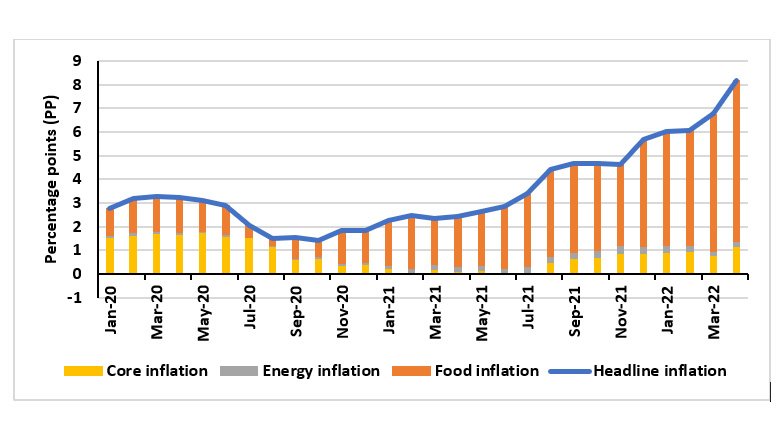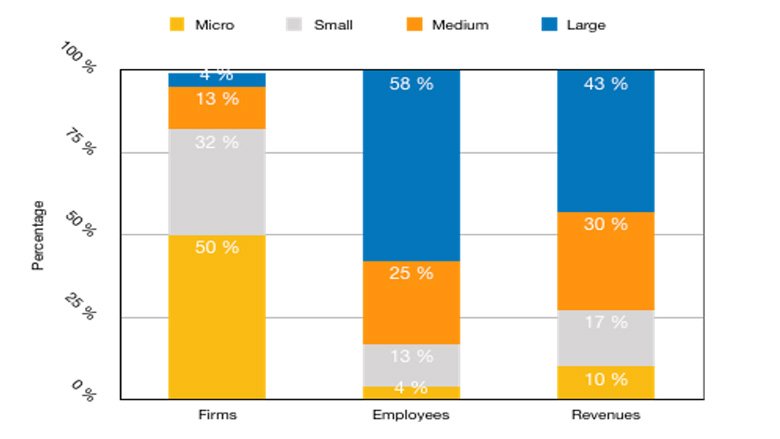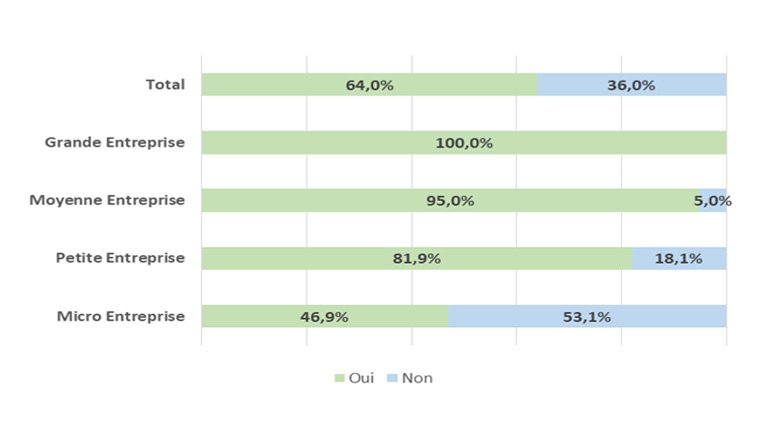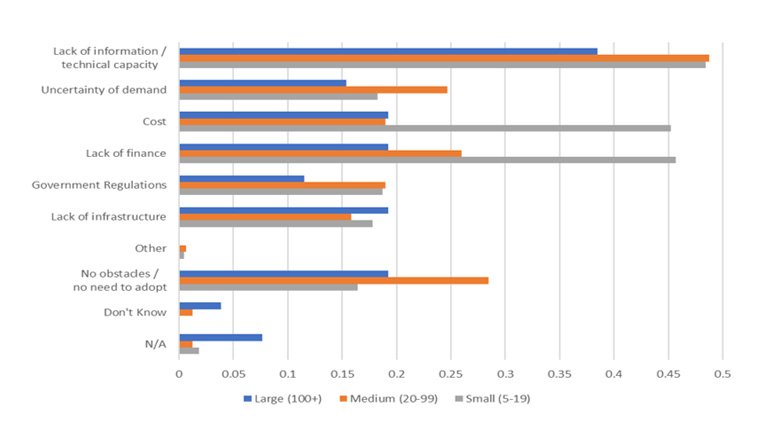Nouakchott, June 21, 2022 - According to the World Bank's fifth Economic Update on Mauritania, the country’s economic recovery in 2021 was robust yet below pre-COVID-19 levels and growth potential. Growth is estimated to have rebounded to 2.4 % in 2021 thanks to an increase in private consumption and investment, as well as an improved performance of the services sector. The report notes that inflation continued its upward trend throughout 2021 and accelerated further in the first half of 2022, fuelled by rising energy and food prices as the war in Ukraine unfolds. Headline inflation increased from 1.4 % year-on-year (y/y) in October 2020 to 8.9 % (y/y) in May 2022, mainly due to higher food prices.
Figure 1: Contribution to Inflation
The report, “The private sector at the centre of economic transformation and job creation”, notes that the positive recent economic developments was driven by the stabilization of the budgetary situation, which remained solid in 2021, reflecting a primary surplus and a downward trend in the debt-to-GDP ratio. Thanks to a successful COVID-19 vaccination roll-out, a thriving extractive sector and expected increased in public sector contribution, the country looks set for a more optimistic growth in 2022. Economic growth is expected to continue to recover in 2022 to 4.5 %, driven by stronger production in the extractive sector, successful vaccine deployments and increased public sector investment.
However, the country remains vulnerable to shocks such as a more protracted COVID-19 pandemic, security risks in the Sahel region, a prolonged conflict in Ukraine, and drought-related risks that could result in lower economic activity and increased poverty. In the medium-term, the Government needs to focus on fiscal sustainability, improving budget execution, and inclusive growth including through a stronger partnership with the private sector. Further, it will be important continue to improve the business climate and prudent debt management.
Recognizing that developing a competitive and vibrant private sector will be an essential contributor to economic development and growth, the report’s second chapter focuses on examining main obstacles and drivers to private sector development. The report finds that Mauritania benefits from a resilient and job-creating formal private sector with job creation mainly driven by large companies. In comparison with other economies, however, formal sector players in the country are few, representing only a small portion of economic activity and are held back by critical binding constraints, notably lack of access to finance and low levels of innovation and technology adoption.
Figure 2. Distribution of number of firms, employment, and revenues
According to report, only 14 percent of firms in the country reported having a loan in recent years, while 12 percent reported needing a loan to expand production but not having access to it. Constraints to accessing finance mostly affect small businesses, which could grow faster if supported by an appropriate policy environment. Data showed that in 2018 and 2020, only 12 percent of business loans went to small and medium sized (SMEs), while large companies received 88 percent. The report confirms that access to finance remains a key constraint for Mauritania’s private sector, especially smaller firms.
Figure 3. Access to financial account by category
The report also suggests that Mauritanian firms have significant room to improve technology in their key business functions. Technology adoption among private sector remained low in 2021, especially with regards to use of technology to aid general business functions, such as sales, sourcing, quality control, and marketing. Technology adoption for purposes of performing business functions, such as administration, processing payments, and production planning, is relatively widespread though usage remains limited. The most common and cited barrier preventing firms from adopting technologies is lack of information and knowledge about existing and potential technologies.
Figure 4. Perceived obstacles for adopting technology
The report proposes a series of policy actions to support private sector development and address the key barriers discussed. Key policy actions include: (i) strengthening access to finance for SMEs through, for example, the operationalization of the SME Credit Guarantee Fund or the development of credit institutional specialized in lending to SMEs; (ii) facilitating technology adoption at firm level. This could include setting up digital technology extension programs to promote greater awareness of the types and potential uses of technologies and (iii) reforming competition policy to foster private sector development and more competitive markets.




